USB-C-porte og -kabler ser ud til at være overalt i disse dage. Den alsidige grænseflade giver strøm, data og videotransmission alt i ét standardkabeldesign. Men med denne alsidighed kommer der en vis forvirring omkring kapaciteter. Vi bliver ofte spurgt - kan ethvert USB-C-kabel overføre videosignaler til eksterne skærme eller tv'er? Det korte svar er nej. I denne artikel vil vi opklare nogle almindelige misforståelser og forklare præcis, hvad der er nødvendigt for USB-C-videoforbindelse.
Indholdsfortegnelse
USB-C videotransmissionsstandarder
For at et USB-C-kabel kan håndtere videooutput, skal det overholde specifikke industristandarder, der muliggør video over grænsefladen. De to hovedstandarder er:
USB-C Alt-tilstand
Alt Mode står for "Alternate Mode" og tillader USB-C-stikket at kanalisere andre protokoller end standard USB-data. For video er de relevante Alt Mode-protokoller DisplayPort og HDMI. Med Alt Mode-understøttelse kan en USB-C-port sende DisplayPort- eller HDMI-videosignaler direkte.
| DisplayPort Alt-tilstand | HDMI Alt-tilstand |
| Bærer indbygget DisplayPort-lyd/video | Bærer HDMI audio/video |
| Højere opløsninger og opdateringshastigheder | Begrænset til 4K 60Hz |
| Understøttelse af Display Stream Compression | HDMI 2.0b hastigheder |
Så et USB-C-kabel med Alt Mode-funktioner kan erstatte HDMI i fuld størrelse eller DisplayPort kabler. Dette muliggør slanke og bekvemme forbindelser mellem bærbare computere, mobile enheder, dockingstationer og eksterne skærme.
Båndbredde sammenligning
Tabellen nedenfor viser en sammenligning mellem båndbreddekapaciteterne for standard USB 3.2, DisplayPort over USB-C og HDMI over USB-C:
| Standard | Version | Max båndbredde |
| USB 3.2 | Gen 2x2 | 20 Gbps |
| DisplayPort | 1,4 HBR3 | 32,4 Gbps |
| HDMI | 2.0b | 18 Gbps |
Som du kan se, har DisplayPort den højeste båndbredde over USB-C, hvilket muliggør højere opløsninger og opdateringshastigheder sammenlignet med HDMI Alt Mode. Begge er langt mere egnede end standard USB-data til videotransmission.
Opløsninger Support
Her er en oversigt over opløsninger og opdateringshastigheder, der understøttes af begge USB-C-videostandarder:
DisplayPort Alt-tilstand
- Op til 4K ved 240Hz
- Dual 4K ved 144Hz
- Op til 8K ved 60Hz (DSC)
HDMI Alt-tilstand
- Op til 4K ved 60Hz
- Ingen kompressionsstøtte
Så DisplayPort er bedre egnet til spil med meget høj opløsning og høj opdateringshastighed eller videoredigering. HDMI Alt-tilstand dækker stadig grundlæggende 4K 60Hz-skærmbehov.
Thunderbolt 3 og 4
Thunderbolt 3 og den nyere Thunderbolt 4 forbedrer USB-C ved at understøtte videotransmission, PCIe-data, strøm og andre højhastighedsdata på samme tid.Dette betyder, at Thunderbolt-kabler problemfrit understøtter eksterne grafikkort, RAID-lagerarrays og højopløselige skærme over et enkelt stik.
Begge Thunderbolt-generationer understøtter to 4K-skærme eller en 5K-skærm. Dog takket være øget båndbredde - op til 40 Gbps til Thunderbolt 3 og op til 40 Gbps for Thunderbolt 4, kan konfigurationer med flere skærme nå højere opløsninger og opdateringshastigheder med den nyere standard.
Har du brug for Thunderbolt eller vil Alt Mode gøre det?
Et almindeligt spørgsmål er, om bærbare computere har brug for fuld Thunderbolt 3 eller 4 porte til videooutput. Svaret er ikke nødvendigvis. Her er nogle nøglepunkter:
- Hvis der kun vises forbindelse, har Alt Modes nok båndbredde
- Thunderbolt påkrævet til eksterne GPU'er eller PCIe-tilbehør
- De fleste bærbare computere har både Alt Modes og Thunderbolt aktiveret
- Thunderbolt bringer DisplayPort indbygget - så Alt Mode understøttes
- Thunderbolt-kabler fungerer også til Alt Mode-enheder
Den største fordel ved videobrug er, at Thunderbolt-kabler er designet mere robust for at undgå problemer med signalintegritet. Så de tilbyder stor kompatibilitet på tværs af økosystemet.

Sammenfattende - videooutput ved hjælp af en USB-C-port og et kabel kræver Alt Mode eller Thunderbolt-understøttelse for at overføre HDMI, DisplayPort eller andre videosignaler. Uden disse muligheder kan USB-C-kabler kun overføre almindelige USB-data.
Sådan identificeres USB-C-kabler, der understøtter video
Hvordan kan du nemt finde ud af, om videotransmission er understøttet, når du køber USB-C-kabler? Her er afslørende tegn, du skal kigge efter:
Tjek kabelmærker
Se nærmere på kabelenderne, husene og den printede ærme. Producenter vil normalt udskrive ikoner eller etiketter, der angiver et kabels egenskaber:
- DisplayPort- og/eller HDMI-etiketter betyder Alt Mode-videounderstøttelse
- Thunderbolt-ikonet angiver Thunderbolt 3- eller 4-overensstemmelse
- VESA DisplayHDR-certificering betyder DisplayPort-video op til 4K 120Hz
Så hold øje med disse billedforklaringer, når du identificerer videoklare USB-C-kabler.
Dechifrering af DisplayPort-marketingvilkår: HDR, HBR2, HBR3
Du vil se en masse forvirrende DisplayPort-marketingsprog, når du evaluerer USB-C-videokabler. Hvad betyder det hele? Her er nogle præciseringer:
- HDR: Henviser til High Dynamic Range for rigere farver og kontrast
- HBR2 og HBR3: Høj bithastighedstilstande, der skubber flere Gbps over kabler
- HBR2 = 17 Gbps: Håndterer 1440p 240Hz eller 4K 144Hz
- HBR3 >= 32 Gbps: Skubber 4K 240Hz eller 8K 60Hz
Ethvert USB-C-kabel med DisplayPort HBR3-understøttelse vil give den absolut højeste ydeevne til spil- og videoapplikationer - hvilket gør dem også pænt fremtidssikrede.
Undersøg specifikationer
Et kabel, der understøtter videotransmission, vil angive standarder som Thunderbolt 3/4, DisplayPort 1.4 eller HDMI 2.0b i dets specifikationer eller beskrivelse. Match disse specifikationer med din USB-C bærbare computer, tablet, telefon eller skærm for at sikre kompatibilitet.
I nogle tilfælde er videokapaciteter knyttet til et kabels ydeevnespecifikationer og kvalitet. For eksempel:
- Thunderbolt 4-kabler kræver certificering for 40 Gbps-drift
- DisplayPort 1.4 kræver HBR3-understøttelse til 4K 144Hz
- Kabler af dårlig byggekvalitet kan have kompatibilitetsproblemer
Så tjek kabelspecifikationerne grundigt før køb og brug.Velrenommerede producenter som Cabletime tester og verificerer kabler for at garantere fejlfri højopløsnings videoydelse uden fald, støj eller andre problemer.
Vær opmærksom på Spec Sheet detaljer
Det er vigtigt at læse specifikationer omhyggeligt og vide, hvad du skal kigge efter. Pas på følgende nøgledetaljer:
- Alt Mode-understøttelse - DisplayPort 1.4 eller HDMI 2.0
- Enhver båndbredde eller hastighed angivet i Gbps
- Hvis Thunderbolt-certificering er specifikt nævnt
- Længder tilgængelige for garanteret videoydelse
- Om der er udført kvalitetstest
Matchende præcise specifikationer forhindrer ubehagelige overraskelser hen ad vejen!
Tjek hardwarekompatibilitet
Dobbelttjek, at de USB-C-enheder, du vil tilslutte, begge er videokompatible. For eksempel deaktiverer nogle bærbare computerproducenter understøttelse af videoudgang over USB-C, selv når selve porten understøtter DisplayPort Alt Mode eller Thunderbolt-standarder. Så kablet, kildeenheden og destinationsdisplayet skal alle matche.
Omhyggelig verificering af kabelvideofunktioner sammen med tilsluttet hardwarekompatibilitet forhindrer ubehagelige overraskelser!
Hvorfor hardwarekompatibilitet er vigtig
For at forstå USB-C hardwarekompatibilitet, tænk på videokabler som motorveje mellem enheder. Trafikken flyder jævnt, hvis:
- Kildeport understøtter videooutput
- Kabelbåndbredde matcher signalbehov
- Displayets maksimale inputopløsning er ikke overskredet

Enhver flaskehals betyder, at kabelkapacitet er spildt. Match altid porte, kabelklassificering og skærmspecifikationer for den ønskede ydeevne!
Almindelige USB-C-videoproblemer og løsninger
Mens standarder som USB-C Alt Mode og Thunderbolt helt sikkert har forenklet tilslutningsenheder til videooutput, kan brugerne stadig løbe ind i problemer:
Videotransmissionsfejl
Hvis din USB-C bærbare computer ikke kan udsende video eller viser en tom skærm på den tilsluttede skærm, er der nogle ting, du kan prøve:
- Brug et kendt godt videokompatibelt USB-C-kabel
- Tilslut kablet direkte uden portudvidelser/hubs
- Skift skærmoutputindstillinger i OS-videoindstillinger
- Opdater grafikdrivere og firmware til USB-C-porte
- Prøv forskellige skærmindgangstilstande (DisplayPort/HDMI)
Med ikke-videokabler er opgradering til et Alt Mode eller Thunderbolt-kompatibelt kabel nøglen. Prøv også forskellige kabler selv på tværs af lignende modeller, da dårlige konstruktionskvaliteter kan påvirke pålideligheden.
Trin-for-trin fejlfindingsvejledning
Her er en trin-for-trin guide til, hvordan du fejlfinder USB-C-videoproblemer:
- Bekræft hardwarekompatibilitet- Understøtter bærbar, kabel og skærm alle de nødvendige videotilstande?
- Prøv direkte forbindelser- Fjern eventuelle adaptere/hubs mellem enheder.
- Tjek fysiske forbindelser- Sæt kabler på plads igen, tjek for skader/rester.
- Skift monitorindgange- Skift gennem DisplayPort, HDMI-tilstande på skærmen.
- Opdater alle firmware og drivere- På bærbare computere og skærme over USB-C/Thunderbolt.
- Test med verificeret kabel- Brug Thunderbolt-certificeret eller højkvalitets DP/HDMI-kabel.
Metodisk at følge disse trin kan isolere de fleste videotransmissionsproblemer.Fortæl os, hvis problemerne stadig fortsætter!
Problemer med billedforvrængning
Hvis din USB-C-videoudgang viser beskadigede, flimrende eller forvrængede billeder, indikerer dette fysisk skade, elektromagnetisk interferens eller problemer med signalintegriteten med kablet. Mulige løsninger omfatter:
- Undersøg kabelender og stik for eventuelle skader
- Sørg for, at kabelføringer ikke ligger på tværs af netledninger
- Udskift defekte kabler eller kabler af dårlig kvalitet
- Brug skærmede kabler med ekstra fletning
- Begræns kabelløb til 15 fod maksimalt
Kabler af høj kvalitet som dem, der tilbydes af Cabletimes, er konstrueret til at forhindre billedforvrængning på tværs af almindelige kørelængder. Vi tester kabler grundigt for at garantere perfekt videotransmission.
Kabeldesignfaktorer
Flere aspekter af kabelkonstruktionskvalitet kan påvirke videosignalets integritet:
- Antal ledninger og kabelmåler
- Snoningsforhold i kabelpar
- Afskærmning mod EMI/RFI-støj
- Stik forgyldt kvalitet
- Strukturelle samlinger & afslutning
Analyse under laboratoriescopes under videosignaltransmission gør det muligt at opdage designsvagheder tidligt. Premium-komponenter hjælper med at opbygge modstandskraft.
Kompatibilitetsforvirring
USB-C-økosystemet spænder over forskellige producenter, der bygger enheder, porte, grafikdrivere, kabler, skærme og endda operativsystemer. Dette kan forårsage kompatibilitetshovedpine, medmindre du nøje matcher komponenter:
- Bærbar USB-C-porte kan mangle videounderstøttelse, selvom Thunderbolt er til stede
- Opløsninger/opdateringshastigheder afhænger af port, kabel og skærmspecifikationer
- Eksterne skærme kan have særheder, der kræver justeringer af OS-indstillinger
- Nogle USB/Thunderbolt-docks tilbyder ikke ukomprimeret videoudgang
Så test komponenter ende-til-ende før implementering på tværs af hele din opsætning. Kabeltid kabler fungerer problemfrit på tværs af bærbare Windows-computere, MacBooks, tablets og endda smartphones med USB-C. Men for store multi-monitor installationer, valider alt før udrulning.

Eksempler fra den virkelige verden
Her er nogle virkelige USB-C-kompatibilitets-gotchas, du skal være opmærksom på:
- Visse bærbare forretningslinjer deaktiverer videoudgang via USB-C i BIOS
- Understrøms USB-C-porte falder til lavere opløsninger
- Skærme har brug for en force-refresh, når de kommer ud i dvale/standby
- Thunderbolt docker passerer ikke gennem ukomprimeret video
Medmindre de er omhyggeligt testet i hver konfiguration, kan tilsyneladende kompatible komponenter stadig overraske!
Fremtidige trends inden for USB-C-kabler

Som en stadig mere udbredt enkeltkabelløsning til strøm-, data- og videotransmission fortsætter USB-C-adoptionen med at accelerere. Flere bærbare computere og mobile enheder, der lanceres hvert år, drager fordel af USB-C med Thunderbolt-understøttelse. Selv gaming-pc'er og tilbehør har USB-C-forbindelse. Lad os tage et kig på, hvilke nye muligheder eller forbedringer der venter forude.
Højere opløsninger og opdateringshastigheder
Skærmopløsninger fortsætter med at klatre opad fra 4K til 5K og endda 8K Ultra HD. Samtidig er opdateringshastighederne også stigende fra 60Hz og 120Hz paneler til 240Hz og 360Hz skærme. For at understøtte disse ekstreme skærmopløsninger og hastigheder skubber nye USB-C-kabler grænserne for protokoller, herunder:
- DisplayPort 2.0 kabler, der understøtter op til 16K skærme
- Thunderbolt 5-udvikling på vej til 80 Gbps gennemløb
- Display Stream Compression for at pakke flere pixels gennem eksisterende kabler
- Multiport-skærme, der kombinerer flere kabler for massiv dpi
Så forvent banebrydende videoformater til at kræve blødende kant USB-C kabel design i de kommende år.
Marchen mod 16K
Mens 8K-skærme stadig er sjældne og dyre, anvender semi-pro-brugssager disse ultraskarpe opløsninger i dag. Og industriens fremskridt mod 16K fortsætter, efterhånden som kompressionsteknologierne forbedres. For at håndtere 16K ramper næste generations kabler op:
- DisplayPort 2.1 under udvikling, lover 128 Gbps båndbredde
- Thunderbolt 5 i design, målrettet op til 80 Gbps hastigheder
- Mindre nødvendige pixels takket være Display Stream Compression
- Multi-port kæder flere kabler til peak interfaces
Marchen mod fotorealistisk 16K+ video fortsætter, muliggjort af nyt højhastighedskabelgennembrud!
Længere forlængede kørsler
Specialiserede fiberoptiske USB-kabler strækker sig allerede op til 100 meter til nicheapplikationer. Nye kabelspecifikationer tillader dog traditionelle kobberbaserede USB-C-ledninger at spænde over længere afstande uden at kræve signalforstærkere eller forstærkere. Disse forlængede kabler vil tage højde for store konferencelokaler, foredragssale og endda stadioner, der skal sende 4K-video til distribuerede skærme i miljøet.
At skubbe grænser for kobberkabelrækkevidde
Nye teknikker gør det muligt for traditionelle kobber USB-C-kabler at nå længere end før:
- Hybrid fiberkoaksialkabler til 30-50m løb
- Signaludligning og forstærkning IC'er
- Højere kvalitet afskærmning og stik
- Repeater hubs hver 20-30 meter
Mens fiberoptik forbliver bedst til ekstreme afstande, fortsætter kobberkabelteknologien med at forbedre omkostninger og fleksibilitet.
Mobil enhed og Smart TV Support
Vi vil se USB-C fortsætte med at erstatte ældre porte til videooutput på telefoner, tablets og fjernsyn. Alt Mode DisplayPort og HDMI gør det nemt for mobile enheder at forbinde direkte til eksterne skærme via et simpelt vendbart stik. Og smart-tv'er er ved at indbygge USB-C-porte for at erstatte HDMI-indgange ved hjælp af et enkelt standardiseret stik.
Så uanset om du vipper flere skærme på din bærbare arbejdsstation eller sender telefonspil op på storskærms-tv'et, har USB-C dig dækket.
Konvergerer omkring USB-C
USB-C-adoption accelererer med hver ny enhedsgeneration på tværs af:
- Bærbare computere - De fleste modeller har nu USB-C
- Tablets - iPad Pro med USB-C opladning og tilslutning
- Telefoner - Flagskib Androids med DisplayPort-understøttelse
- Skærme - USB-C erstatter HDMI og DisplayPort
- TV - Tilføjelse af USB-C-indgange til skærmforbindelse
Efterhånden som porttilgængeligheden udvides, bliver USB-C mere praktisk som den universelle reserve for videooutput på tværs af alt med en skærm!
Konklusion
USB-C-kabler understøtter ikke automatisk video på trods af deres vildledende kompakte portdesign. Uanset om du skal udsende DisplayPort- eller HDMI-video fra en bærbar computer, tablet eller telefon til eksterne skærme - tilslutning via USB-C kræver specifikke kabelfunktioner. Ved at følge industriens videotransmissionsstandarder som USB-C Alt Modes eller Thunderbolt sammen med verifikation af hardwarekompatibilitet kan brugere bygge modulære arbejdsgange.Mens skærmopløsninger og opdateringshastigheder fortsætter med at stige, skal du vælge fremtidsklare USB-C-kabler som dem fra Cabletimes for at holde trit. Ræk ud for at få råd om implementering af flere skærme eller fejlfinding af USB-C-forbindelse.
Relaterede spørgsmål
Her er svar på nogle almindelige læserspørgsmål:
Hvordan kan jeg se, om mit USB-C-kabel understøtter videooutput?
Tjek kabelender og emballage for DisplayPort- eller HDMI-logoer. Kontroller også, at specifikationerne angiver "DisplayPort Alt Mode", "HDMI Alt Mode" eller høje opløsninger som 4K ved 60Hz. Disse angiver videoegenskaber.
Hvilke enheder er kompatible med USB-C videokabler?
De fleste moderne telefoner, tablets og bærbare computere understøtter USB-C-videooutput, nogle med op til 8K-opløsninger. Avancerede skærme, tv'er og videoprojektorer har også USB-C-videoindgang. Tjek den nøjagtige enhedskompatibilitet, før du køber kabler.
Er der forskelle i videokvalitet mellem forskellige USB-C-kabler?
Ja - billigere USB 2.0- og USB 3.0-kabler har begrænsede eller ingen videokapacitet. Selvom USB-C Alt Mode-kabler understøtter videotransmission i høj opløsning, kan kvaliteten af videotransmission stadig blive påvirket af faktorer som kabelbyggekvalitet, afskærmning og længde. Premium kabler reducerer interferens og giver mere stabile forbindelser. Premium muligheder som Thunderbolt 3 tilbyder uberørt kvalitet.
Kan jeg bruge en USB-C til HDMI-adapter med ethvert USB-C-kabel?
Desværre ikke. Selve USB-C-kablet skal understøtte video alt-tilstande for at fungere med adaptere. Brug af et datakabel med en videoadapter udsender ikke videosignalet til din HDMI-skærm. Tjek altid kabelspecifikationerne først.
Hvad er begrænsningerne ved at bruge USB-C til videotransmission?
De vigtigste begrænsninger er de standarder, der understøttes af dine porte og kabler. For eksempel muliggør Thunderbolt 3 hurtigere hastigheder end almindelig USB-C. Kabellængde spiller også en rolle - længere kabler kan have signalforringelse. Alt i alt er USB-C ekstremt dygtig, bare match specifikationerne omhyggeligt!

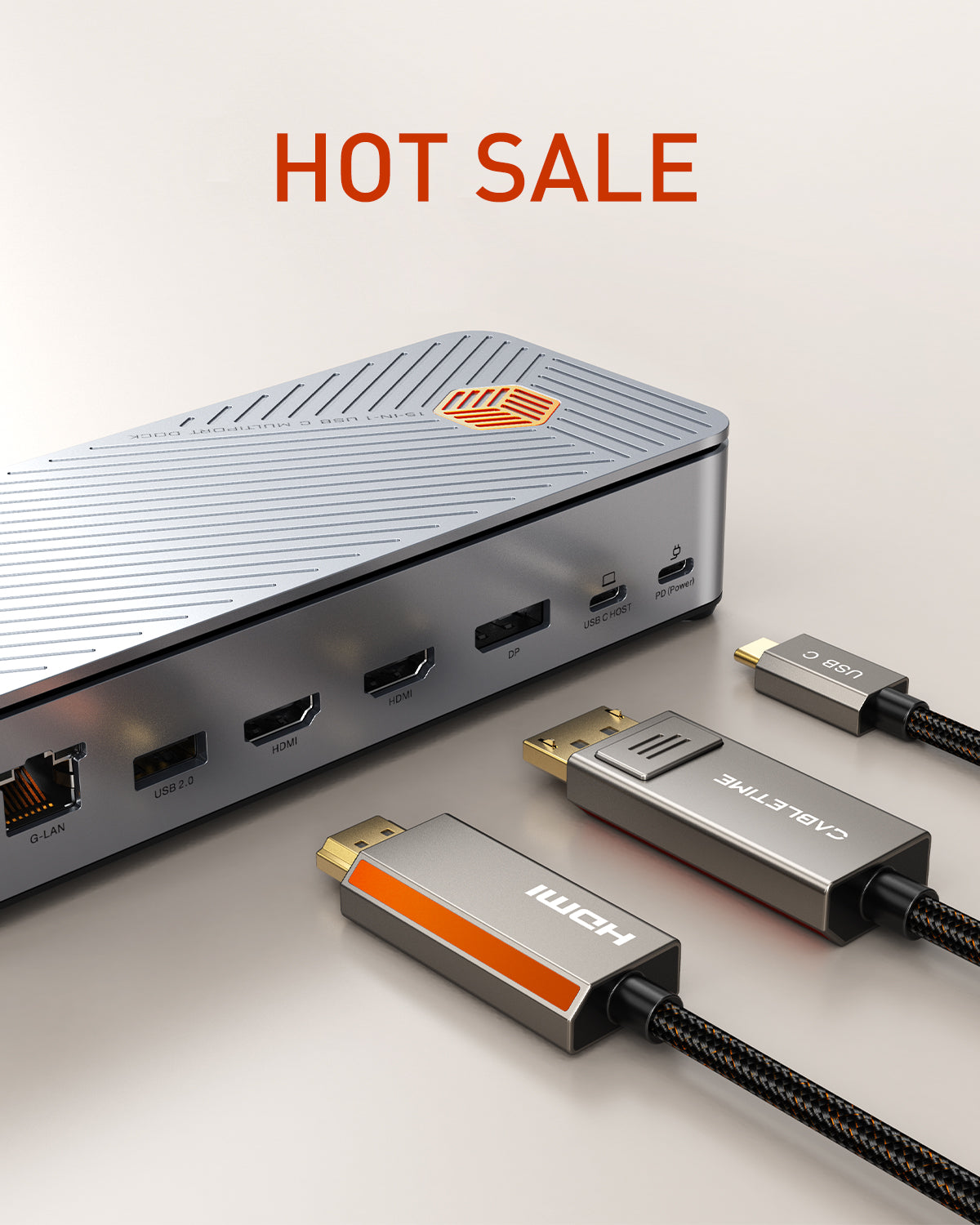
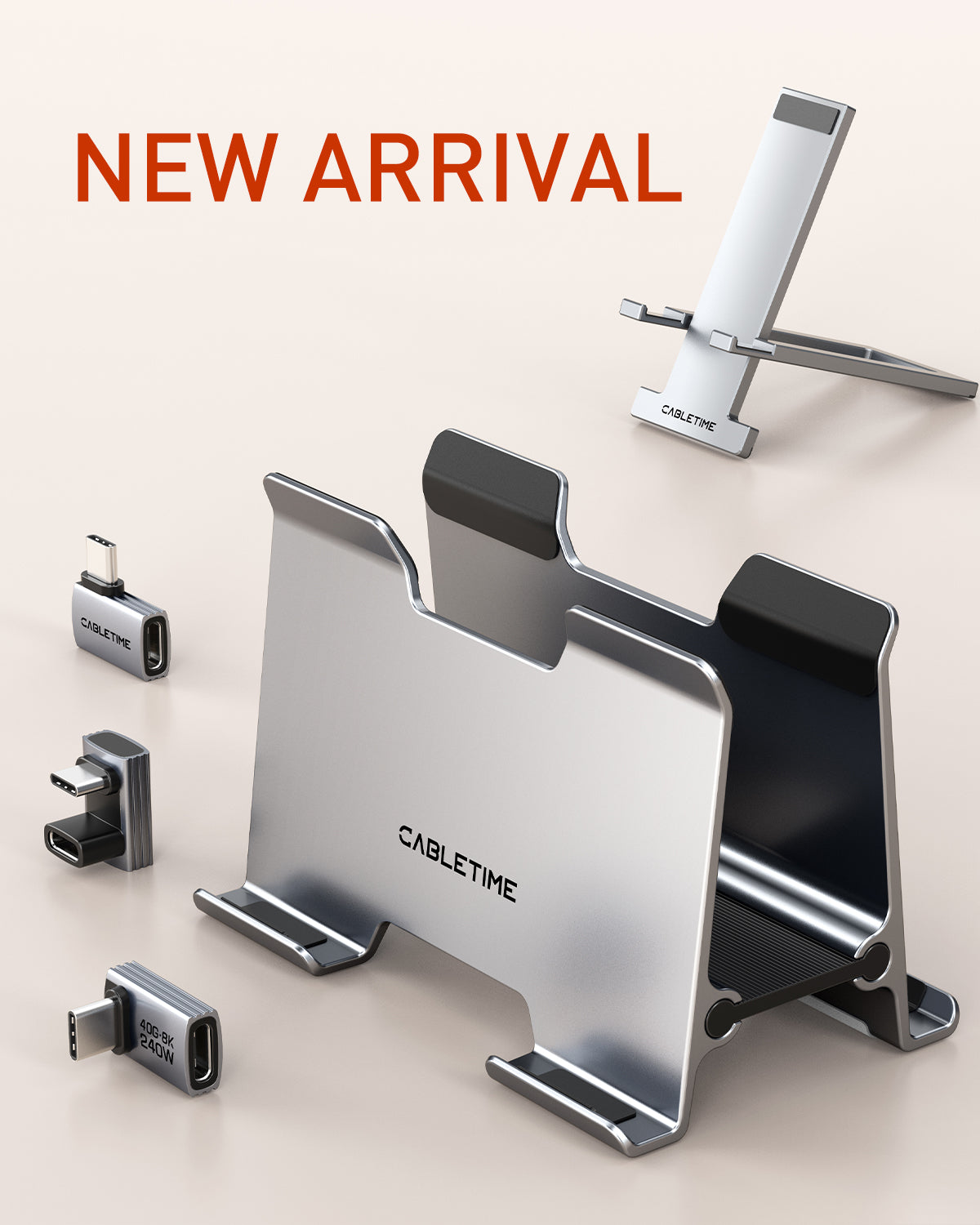
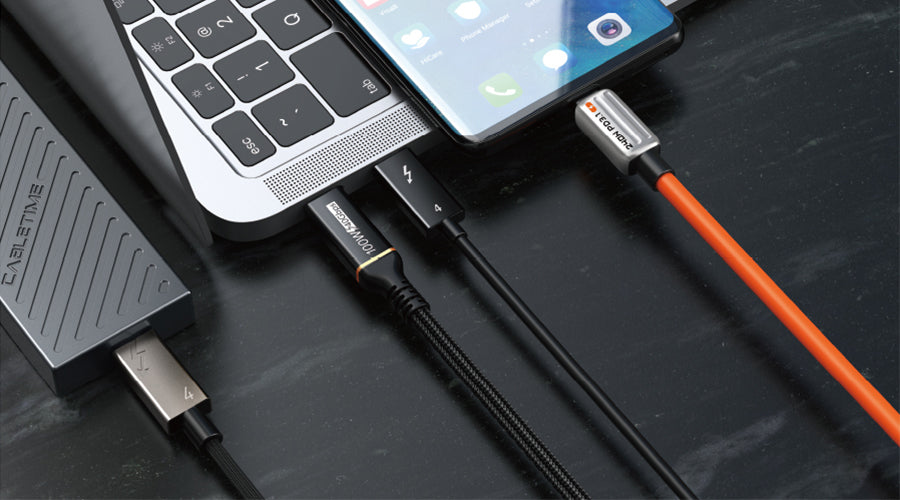
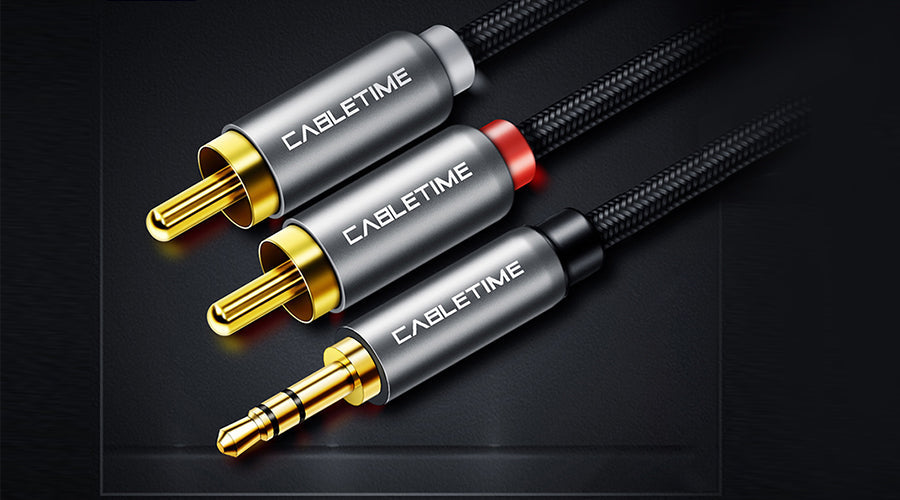
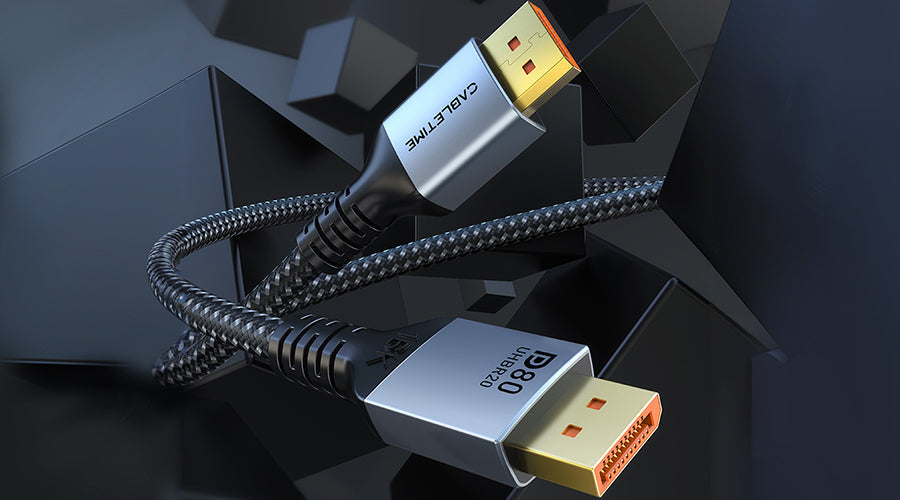
2 kommentarer
Jurgen
hallo, ich bin Laie und verstehe vieles in diesem Artikel nicht…
habe im Auto ein Audio Video System mit 3,5 mm Klinkenbuchse für Video (Eingang für video). habe nun an meine Samsung Telefone S4, A02, tablet und Pixel 7a an die USB Buchse ein Kabel angeschlossen mit 3x cinch male. In das Auto-System habe ich eine videofähige Klinke eingesteckt mit ebenfall 3x cinch female und beide
Adapter verbunden.
Auto System auf AUX 1 oder AUX 2 eingestellt.
Auf dem Samsung ein video eingeschaltet. Auto meldet “Kein Signal”.
dann habe ich versucht, die usb c am handy von Steuerung durch angeschlossenes Gerät auf Steuerung durch handy umzuschalten. bei allen 4 Geräten Meldung “nicht möglich”.
gibt es keine Möglichkeit der video-Übertragung per Kabel??
ich verstehe nicht warum es nicht funktioniert. Anschluss von meinen handies an verschiedene ältere Fernsehgeräte per Kabel (z.B. HDMI) funktionierte immerKönnen Sie helfen?
danke!
Jürgen
ps bin in Südamerika, hier gibt es video im Auto
Tom
Do you sell a cable for data transmission with a male lightning connector to a male USB-C connector? I’m using this to connect my iPhone 13 to my Tascam Portacapture X8 recorder…. If so, please give me the link… Thanks… Tom
Efterlad en kommentar
Denne side er beskyttet af hCaptcha, og hCaptchas Politik om beskyttelse af persondata og Servicevilkår er gældende.